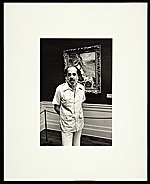Speaking of Art: Selections from the Archives of American Art’s Oral History Collection, 1958-2008
Exhibited in Washington, D.C. at the Lawrence A. Fleischman Gallery inside the Reynolds Center for American Art and PortraitureOctober 11, 2008 - March 15, 2009
To celebrate the 50th anniversary of the Archives’ oral history program, we have selected audio excerpts from some of our most fascinating interviews and paired them with photographs from our collections.
Lee Krasner rejects the word ‘drip’ as an accurate descriptor of Jackson Pollock’s paintings; Charles Burchfield reads poems that he penned on the verso of his paintings; and Emmy Lou Packard recounts working with Diego Rivera on the Pan-American Unity mural in 1940.
These samplings, among 3,000 audio recordings in the Archives’ collection, chronicle the great diversity of the American scene, augmenting and refining our perception of individual artists, dealers, collectors, and curators and their social worlds. Through the ongoing production of oral history interviews, the Archives of American Art collects and preserves the distinct voices and memories of the American art world.
Images and Interviews from this Exhibition
Charles Burchfield
Charles Burchfield, who is best known for his lyrical evocations of nature in watercolor, often wrote his poetic observations in free verse on the back of his works. He read one such poem to interviewer John D. Morse in a 1959.“A stagnant August morning during the drought season, as the pitiless sun mounts into the mid-morning sky, and the insect chorus commences, the katydids and locusts predominating. Their monotonous, mechanical, brassy rhythms soon pervade the whole air, combining with heat waves of the sun, and saturating trees and houses and sky.”
Listen to excerpt: Charles Burchfield interview clip
Read full transcript: Oral history interview with Charles Burchfield, 1959 Aug. 19

Carmen Lomas Garza
Artist Carmen Lomas Garza draws inspiration from her own Mexican American heritage. In a 1997 interview with Paul Karlstrom, Lomas Garza noted that her background not only distinguished her art, but allowed her to reach out to a Chicano audience.“It was so daunting to try to do anything with the mainstream art world and I just felt like I would not fit. And then I also had this need to fill my obligation to my community and also within the Chicano art movement and the Chicano movement, that I felt I needed to develop my own audience. You know, there was this group of people that were not being, that were not getting art work in their lives and could be served with my art work. So I started developing my own audience, which was the Mexican American audience.”
Listen to excerpt: Carmen Lomas Garza interview clip
Read full transcript: Oral history interview with Carmen Lomas Garza, 1997 April 10 - May 27
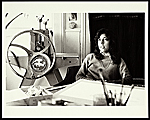
Paul Cadmus and George Tooker
Although many of Paul Cadmus' works became topics of controversey, the artist explained in an interview with Judd Tully that he thrived on anonymity and delicacy.“I'm not comfortable making sketches. I want to be more anonymous. I mean, I want to be more invisible. I would love to be invisible quite often, but it's not possible. I haven't learned how.
And my limitations are that I'm interested in delicacy and refinement. Especially in technique. I mean, especially in handling of paint. I don't like anything that's coarsely done.”
Listen to excerpt: Paul Cadmus interview clip
Read full transcript: Oral history interview with Paul Cadmus, 1988 March 22 to May 5
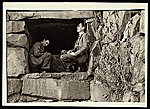
Jackson Pollock and Lee Krasner in Pollock's studio, looking up at the camera
With a rough cadence and distinct Brooklyn accent, Lee Krasner emphatically argued during her 1964 interview with Dorothy Seckler that Jackson Pollock’s works were not indicative of their “drip painting” label.“The word ‘drip’—it just drives me—it makes me very uncomfortable. Actually, what is meant there is that it was aerial and it landed instead of in contact with the canvas, it was aerial. Now I don't know how to describe this aesthetically, but ‘drip’ is a very bad substitute to try to explain it.”
Listen to excerpt: Lee Krasner interview clip
Read full transcript: Lee Krasner interviews, 1964 Nov. 2-1968 Apr. 11

Robert Motherwell
According to his 1971 interview with Paul Cummings, Robert Motherwell realized at the young age of three that abstracted forms profoundly resonated with him. As his artistic career evolved from the classroom blackboard to giant canvases, he retained his interest in symbolism by giving his abstracted works thought–provoking titles, such as Elegy to the Spanish Republic.“When I was three, in kindergarten, they had a beautiful blackboard, a real slate one, and every day at eleven o’clock the teacher would make sort of Miróesque diagrams of what the weather was that day; if it was sunny, it was an orange oval; if it was raining, it was blue lines and green grass. And I can still remember at three suddenly grasping that forms are symbolic, that it didn't have to look like rain but that blue lines for rain were even more beautiful than an actual photograph of the rain, and so on. And so I determined on the spot that somehow I would learn how to do that.”
Listen to excerpt: Robert Motherwell interview clip
Read full transcript: Oral history interview with Robert Motherwell, 1971 Nov. 24-1974 May 1
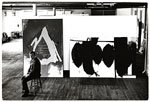
Dominic Di Mare at the Macomber loom
In a 2002 interview with Signe Mayfield, fiber artist Dominic Di Mare traced the roots of his methodology to his childhood experience of patiently watching a calm sea, waiting for an “eruption.”“My father was a commercial fisherman. He...fished for shark. Part of my job on these excursions out in Mexico was to sit on the bow, with my father at the back, watching the lines, the poles, and I would scan the horizon for any disruption, you know, any break in the surface. So my job was to direct my father to these, you know, these surfaces that were being disrupted, and, hopefully, catch fish. And for a long time I saw coming into the studio as just that, that I came into the studio and I always had that surface that I was going to work on. And it was like that was my sea, and that out there on that desk I would sense some sort of eruption on the surface, would be the idea for a piece.”
Listen to excerpt: Dominic Di Mare interview clip
Read full transcript: Oral history interview with Dominic Di Mare, 2002 June 4-10
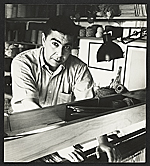
Yasuo Kuniyoshi and Katherine Schmidt
In a 1969 interview with Paul Cummings, Katherine Schmidt fondly reminisced about her early associations with a dynamic group of artists.“I remember our younger years as always being spring. Everybody met to dance and have fun. And everyone was so alive. You did not have to be so careful of your opinions. You could say, ‘I don't like this’ very flatly and expect the other person to say, ‘I do’ and have it out.”
Listen to excerpt: Katherine Schmidt interview clip
Read full transcript: Oral history interview with Katherine Schmidt, 1969 Dec. 8-Dec. 15

Roy De Forest
Painter Roy De Forest revealed in a 2004 interview with Lynn R. Matteson that most of his best works resulted from trial–and–error.“I find that I’ve had millions of ideas which only about five or six have ever worked. You are always thinking about ideas, [but] most of them never work, or only parts. I guess that’s the challenge you accept...If you paint long enough you are probably going to have something that is pretty nice just by accident. That was the idea of Abstract Expressionism, you know, a successful accident. Then the accidents started to look very similar.”
Listen to excerpt: Roy De Forest interview clip
Read full transcript: Oral history interview with Roy De Forest, 2004 April 7-June 30
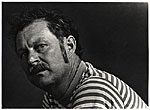
Charles Henry Alston
During the tumultuous year of 1968, Al Murray interviewed painter, Charles Henry Alston. The artist spoke astutely about the challenges and choices facing African American artists.“You continuously ask yourself the question: Is this the way I should paint? Or is this important with things going on here? Picasso I think said that art is a weapon. Should I commit my painting to visualizing, as I see it, the struggle that’s going on? Or should I close my eyes and keep myself and my painting apart from that, involve myself perhaps in other ways that relate to the struggle but keep the painting apart? Right now these are questions I think that most Negro artists have to ask themselves.”
Listen to excerpt: Charles Henry Alston interview clip
Read full transcript: Oral history interview with Charles Henry Alston, 1968 Oct. 19
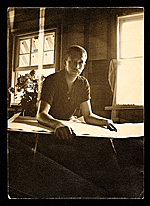
William T. Wiley
Artist William T. Wiley has eschewed conventions of categorization throughout his career. In an interview with Paul J. Karlstrom in 1997, Wiley illuminated how he has remained relevant and unique.“I called myself ‘Mr. Unmodern’ for a while there, because I thought, geez, everyone is going forward, but me, I’m going backwards. And I said, ‘Hmm. With the way things are, the only way to go forward is to go backwards.’”
Listen to excerpt: William T. Wiley interview clip
Read full transcript: Oral history interview with William T. Wiley, 1997 Oct. 8-Nov. 20
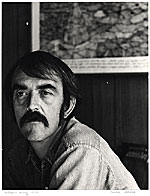
Emmy Lou Packard and Diego Rivera
In the late 1920s, Emmy Lou Packard lived with her family in Mexico, where she became acquainted with Diego Rivera. In 1940 she worked as an assistant to Rivera on his fresco, Pan American Unity, for the 1940 Golden Gate International Exposition on Treasure Island. In an interview conducted by Mary McChesney in 1964, Packard talks about working with Rivera on the fresco.“It was fascinating to me and I wish I had an encyclopedic memory or a tape recorder because all the time he painted, nearly all of the time he painted, he simply talked steadily to me for hours and hours and hours about his life, his past artistic career, politics, millions of fascinating stories, some of them no doubt given a great deal of imaginative treatment, but I'm sure there was a great deal of fact in it too.’
Listen to excerpt: Emmy Lou Packard interview clip
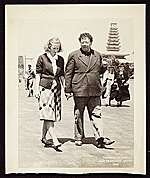
Robert C. Scull
The New York City tax-fleet owner Robert C. Scull began collecting art in the 1950s. Paul Cummings' 1972 interview with Scull captures the force of Scull's personality, as well as his passion and support for young artists.“I'm doing this [interview] with you because I feel that there may be some value to someone, some day, who is trying to find out what made things tick at a certain time. I'm doing this because I think your purpose is serious.”
Listen to excerpt: Robert C. Scull interview clip
